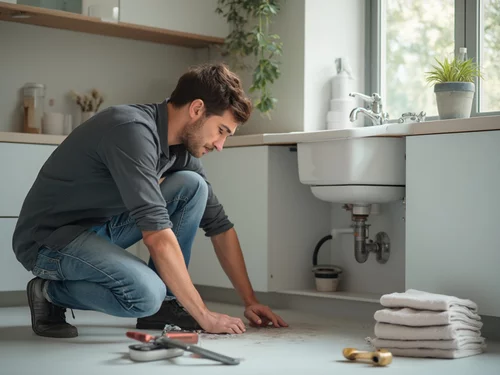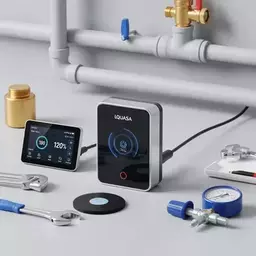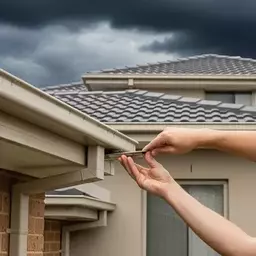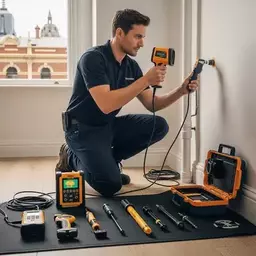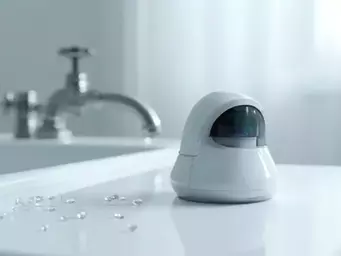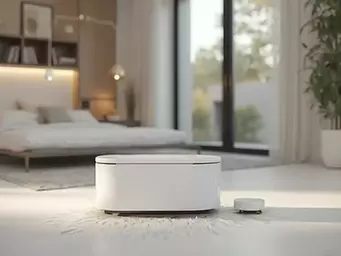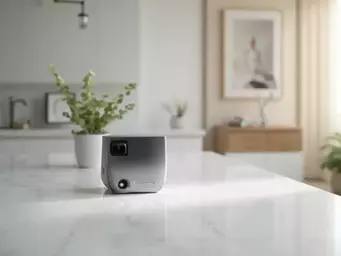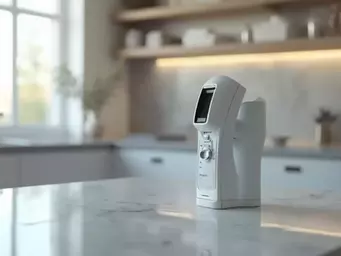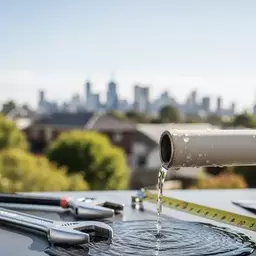Have you noticed unexplained spikes in your water bill or mysterious damp spots in your home? Understanding the signs of water leaks is essential for every homeowner in Melbourne. Early detection can save you from costly repairs and extensive damage. Let's explore the key signs and preventative strategies to keep your home safe and dry.
What You Will Learn
- Visual indicators of leaks include damp spots, water stains, and peeling paint on walls and ceilings.
- Auditory clues such as dripping noises can help locate hidden leaks in your plumbing system.
- Monitoring your water bill for sudden spikes can signal undetected leaks in your home.
- Establishing a regular home inspection routine can catch potential leaks before they escalate.
- Seasonal maintenance tips are essential for preventing leaks during Melbourne's varying weather patterns.
- DIY tools and smart water monitors can aid in early leak detection and help you manage water usage effectively.
Key Indicators of Water Leaks & Preventative Measures
Understanding the signs of water leaks and implementing preventative maintenance are crucial for Melbourne homeowners. This visual outlines the key indicators and strategies to safeguard your home.
Visual Indicators
- ✓ Damp spots/water stains
- ✓ Peeling paint/wallpaper
- ✓ Cracks/bulges in walls/ceilings
Auditory Clues
- ✓ Persistent dripping sounds
- ✓ Gurgling from plumbing fixtures
- ✓ Hissing noises in pipes
Indirect Indicators
- ✓ Sudden spikes in water bill
- ✓ Unexplained increase in usage
- ✓ Discrepancy with seasonal usage
Preventative Maintenance
- ★ Regular home inspections
- ★ Seasonal checks (gutters, pipes)
- ★ Smart leak detectors/apps
Understanding Water Leaks: Signs Every Homeowner in Melbourne Should Know
As a homeowner in Melbourne, it’s crucial to be aware of the signs of water leaks. Unfortunately, leaks can often go unnoticed until they cause significant damage. By understanding the indicators of water leaks, you can take action early and save yourself from costly repairs!
Whether you’ve just moved into a new property or have been in your home for years, knowing what to look for can make all the difference. Let’s dive into the visual, auditory, and indirect signs that could point to a leak in your home.
Visual Indicators of Water Leaks
Identifying Damp Spots and Water Stains
One of the first signs of a water leak is the appearance of damp spots or water stains on walls and ceilings. These can indicate a slow leak from a pipe or roof. Always inspect areas near plumbing fixtures, such as sinks and toilets, as well as your roof after heavy rain.
When checking for stains, look for discoloration or bubbling paint, which often indicate trapped moisture. Address these issues promptly to prevent further damage!
- Damp patches on walls
- Water stains on ceilings
- Peeling paint or wallpaper
Remember, even small stains can signal a bigger problem beneath the surface. If you spot these indicators, don't hesitate to reach out to Leak Detection Experts Melbourne for a thorough inspection.
Spotting Damage on Walls and Ceilings
In addition to water stains, keep an eye out for any damage to your walls or ceilings. Cracks or bulges can be signs of water intrusion. If you notice any of these issues, it's essential to act quickly!
Common areas to check include basements, corners of rooms, and around windows. If the damage seems to worsen over time, it’s a clear call to action. An early intervention can save your home from long-term structural issues.
Auditory Clues: What Sounds Indicate a Leak?
Recognizing Dripping Noises
Have you ever heard a dripping sound when the house is quiet? This could indicate a leak somewhere in your plumbing system! Pay attention to these subtle noises, as they can provide valuable clues to the location of a leak.
If you hear water dripping, try to trace the sound to its source. This might require a bit of patience, but locating the leak early can prevent extensive damage in the long run!
Listening for Unusual Sounds in Plumbing Fixtures
In addition to dripping, listen for unusual sounds from plumbing fixtures. Gurgling or hissing noises can indicate air trapped in the system or a leak in the pipes. Make a habit of listening to your plumbing during quiet times to catch any irregularities.
By being proactive and identifying these sounds, you can ensure that leaks are dealt with before they escalate into bigger problems!
Indirect Indicators: Monitoring Your Water Bill
How Spikes in Water Bills Can Signal Leaks
One of the most telling signs of a leak is a sudden increase in your water bill. If you notice a significant spike, it’s worth investigating! High water bills can often indicate that water is being wasted due to undetected leaks.
Keep track of your usage and compare it to previous months. If you see an unusual jump, take it as a sign to check your property for leaks!
Understanding Seasonal Variations in Water Usage
Water usage can fluctuate with the seasons, especially in Melbourne where we experience various weather patterns. However, if you notice an increase that doesn’t correlate with seasonal changes, it may be time to investigate further.
By monitoring your water consumption trends, you can better identify potential leaks and take necessary action.
We Want to Hear From You!
Have you ever experienced a water leak in your home? What steps did you take to address it? Share your thoughts and experiences below:
Preventative Maintenance: Strategies to Avoid Future Leaks
As a homeowner in Melbourne, there's a lot you can do to prevent water leaks before they become a costly nightmare! Regular maintenance is key, and I'm here to share some effective strategies that can help you safeguard your home against leaks.
Establishing a Regular Home Inspection Routine
First things first—creating a routine for home inspections is crucial. I recommend setting aside time every few months to check various areas of your home for potential leak indicators. Here are some important aspects to focus on during these inspections:
- Examine plumbing fixtures, including faucets and toilets, for any signs of drips or corrosion.
- Check under sinks and around appliances like dishwashers and washing machines for dampness.
- Inspect walls and ceilings for water stains or bubbling paint that could indicate leaks.
A routine inspection can catch small issues before they escalate! And it’s something you can easily integrate into your home maintenance schedule.
What to Look for During Inspections
When conducting your inspections, pay special attention to:
- Visible signs of moisture, such as mold or mildew.
- Cracks in the foundation or walls that can allow water seepage.
- Unusual sounds, like dripping or running water, which could signal hidden leaks.
By being vigilant, you can often spot problems early and address them before they lead to more significant issues.
Seasonal Maintenance Tips for Melbourne Homeowners
Each season brings unique maintenance tasks. For instance, during the rainy season, ensure that gutters and downspouts are clear to prevent water accumulation around your home. On the other hand, summer is a great time to check your irrigation systems. Here’s a quick list of seasonal tips:
- Spring: Inspect your roof for any damage from winter storms.
- Summer: Review sprinkler systems for leaks and adjust for efficient watering.
- Autumn: Clean gutters and check for any issues as leaves fall and accumulate.
- Winter: Insulate pipes to prevent freezing and bursting.
With these seasonal tips, you can maintain a leak-free home throughout the year!
Recommended DIY Tools for Early Leak Detection
Investing in the right tools can make all the difference when it comes to early leak detection. Here are some essential DIY tools that can help you keep an eye on your plumbing:
- Consumer-Grade Leak Detectors: Look for models with sensors that can detect moisture and alert you immediately.
- Water-Monitoring Apps: Apps like these help track your water usage patterns and can notify you of unusual spikes.
- Smart Water Monitors: These devices connect to your plumbing system and provide real-time data on your water usage, helping you catch leaks early.
Utilizing these tools can empower you to manage your water usage proactively, and they are a worthwhile investment for any homeowner!
Useful Apps for Monitoring Water Usage
In today’s tech-savvy world, several apps can assist with monitoring your water usage. Here are my top picks:
- Waterly: An app that tracks your water usage and can help identify any potential leaks.
- Flume: This app works with a smart water monitor to provide detailed insights into your water consumption.
- Everydrop: A great tool for tracking and managing your water bill, alerting you to any unusual increases.
With the right app at your fingertips, keeping tabs on your water usage is easier than ever!
Smart Water Monitors: A Modern Approach to Leak Detection
Smart water monitors are becoming increasingly popular, and for good reason! These devices can detect leaks, track usage, and even send alerts to your phone. When choosing one, consider:
- Connectivity options (Wi-Fi, Bluetooth).
- Compatibility with your existing plumbing setup.
- Features such as remote monitoring and alerts.
These modern tools can provide peace of mind, knowing that you have an extra set of eyes on your plumbing!
Frequently Asked Questions About Water Leaks
- What are the key visual indicators of a water leak?
- Key visual indicators include damp spots, water stains on walls and ceilings, peeling paint or wallpaper, and cracks or bulges in walls or ceilings.
- What sounds should I listen for to detect a hidden leak?
- You should listen for persistent dripping sounds, gurgling from plumbing fixtures, or hissing noises in pipes, especially when the house is quiet.
- How can my water bill help me detect a leak?
- A sudden and unexplained spike in your water bill, or an increase that doesn't correlate with seasonal changes, can be a strong indicator of an undetected leak.
- What is a good routine for home leak inspections?
- A good routine involves regularly checking plumbing fixtures, under sinks, around appliances, and inspecting walls and ceilings for signs of moisture, mold, or unusual sounds.
- What DIY tools can help with early leak detection?
- Recommended DIY tools include consumer-grade leak detectors with moisture sensors, water-monitoring apps that track usage patterns, and smart water monitors that provide real-time data and alerts.
Recap of Key Points
Here is a quick recap of the important points discussed in the article:
- Look for visual indicators such as damp spots, water stains, and peeling paint on walls and ceilings to identify potential leaks.
- Listen for auditory clues like dripping noises or unusual sounds from plumbing fixtures that may indicate a leak.
- Monitor your water bill for unexpected spikes, which can signal undetected leaks in your plumbing system.
- Establish a regular home inspection routine to catch leak indicators early, focusing on plumbing fixtures and potential moisture areas.
- Utilize recommended DIY tools and apps for early leak detection to proactively manage your water usage and prevent costly repairs.

